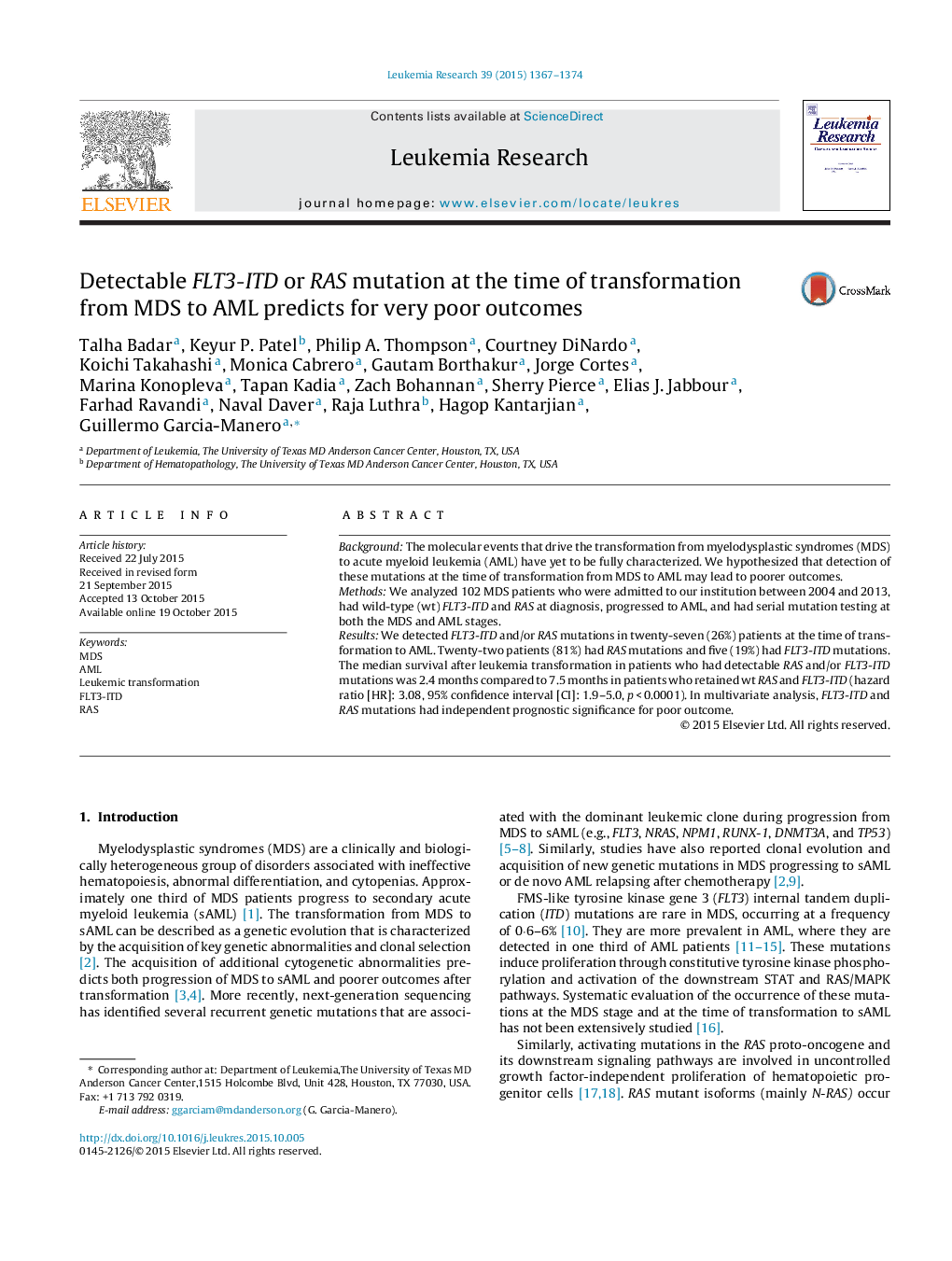| Article ID | Journal | Published Year | Pages | File Type |
|---|---|---|---|---|
| 2136523 | Leukemia Research | 2015 | 8 Pages |
•Twenty six percent acquired FLT3 or RAS mutation at transformation from MDS to AML.•FLT3 and RAS mutation acquisition were independent predictor of poor prognosis.•Monitoring FLT3 and RAS at transformation to AML has important prognostic and therapeutic value.
BackgroundThe molecular events that drive the transformation from myelodysplastic syndromes (MDS) to acute myeloid leukemia (AML) have yet to be fully characterized. We hypothesized that detection of these mutations at the time of transformation from MDS to AML may lead to poorer outcomes.MethodsWe analyzed 102 MDS patients who were admitted to our institution between 2004 and 2013, had wild-type (wt) FLT3-ITD and RAS at diagnosis, progressed to AML, and had serial mutation testing at both the MDS and AML stages.ResultsWe detected FLT3-ITD and/or RAS mutations in twenty-seven (26%) patients at the time of transformation to AML. Twenty-two patients (81%) had RAS mutations and five (19%) had FLT3-ITD mutations. The median survival after leukemia transformation in patients who had detectable RAS and/or FLT3-ITD mutations was 2.4 months compared to 7.5 months in patients who retained wt RAS and FLT3-ITD (hazard ratio [HR]: 3.08, 95% confidence interval [CI]: 1.9–5.0, p < 0.0001). In multivariate analysis, FLT3-ITD and RAS mutations had independent prognostic significance for poor outcome.
